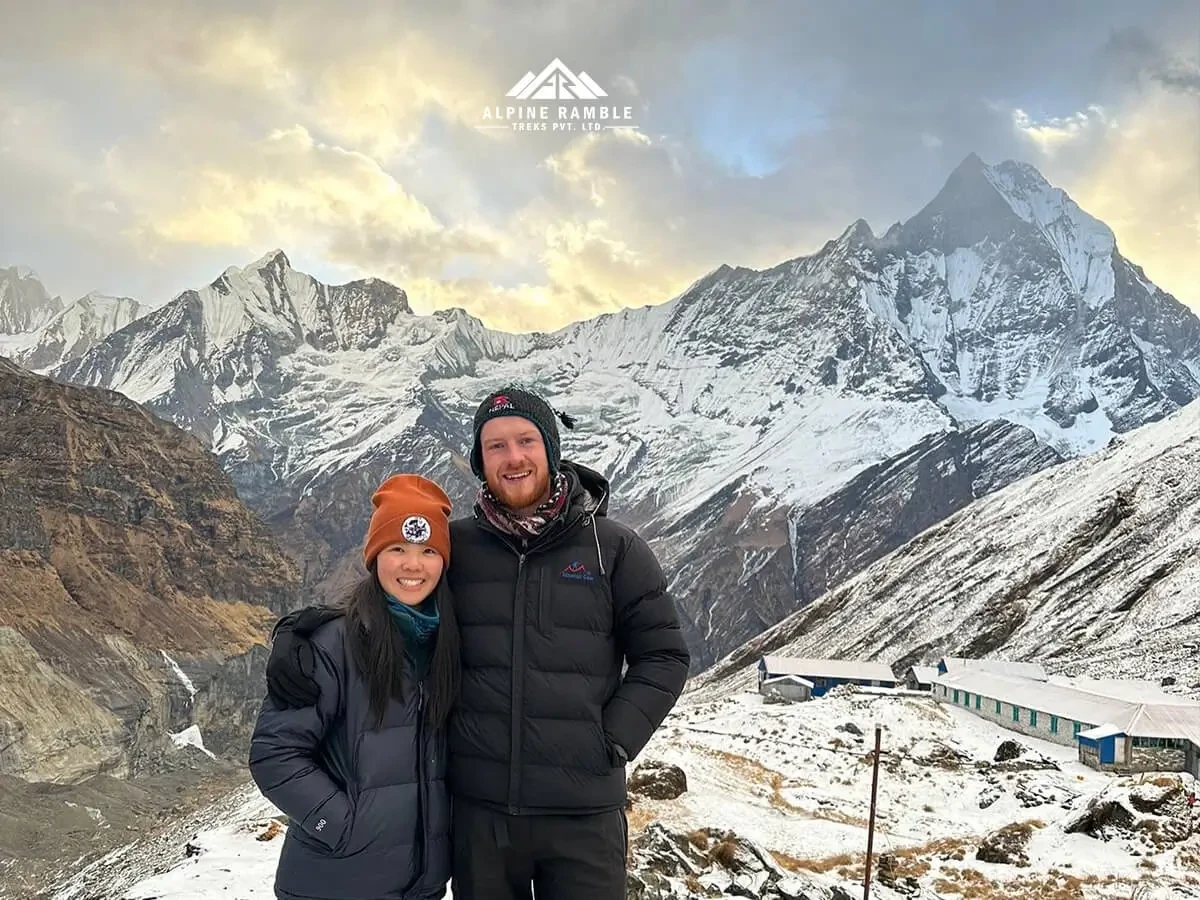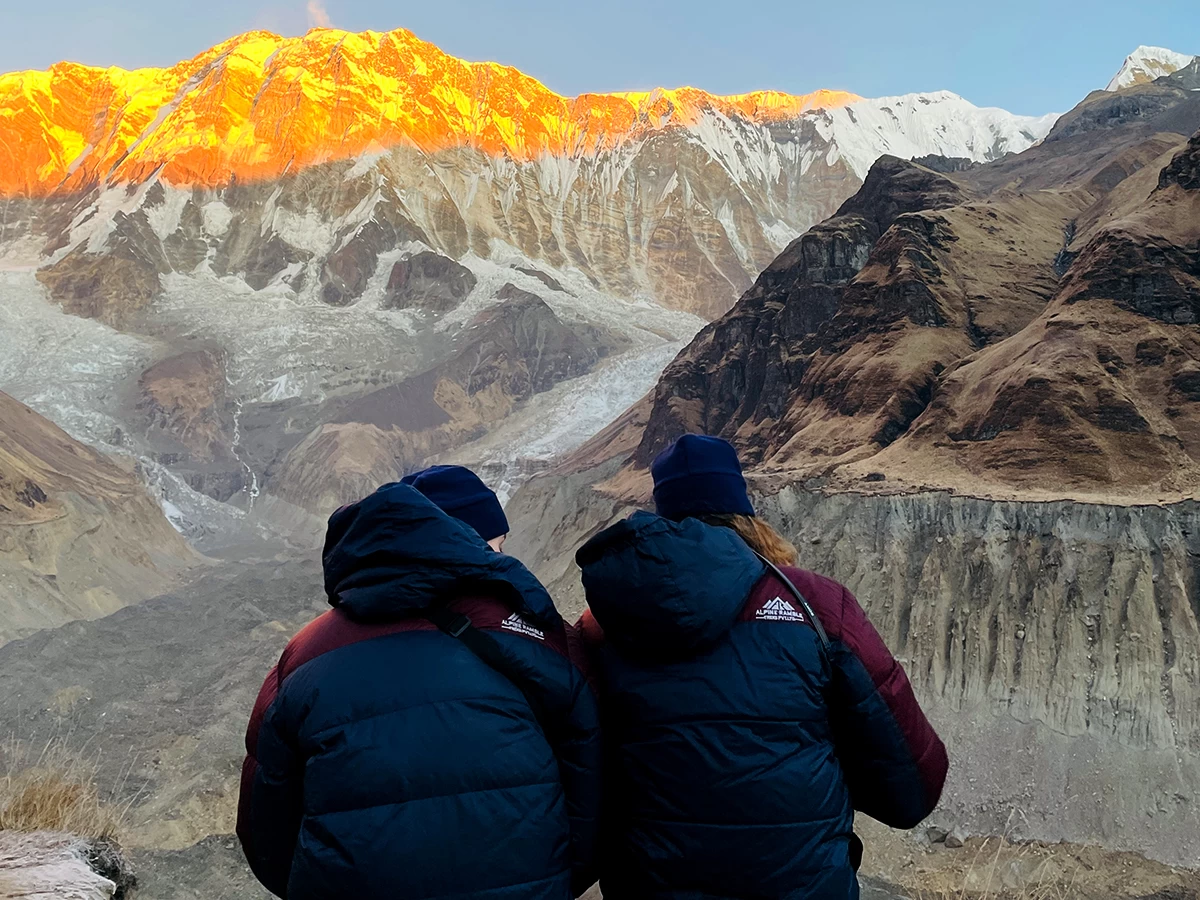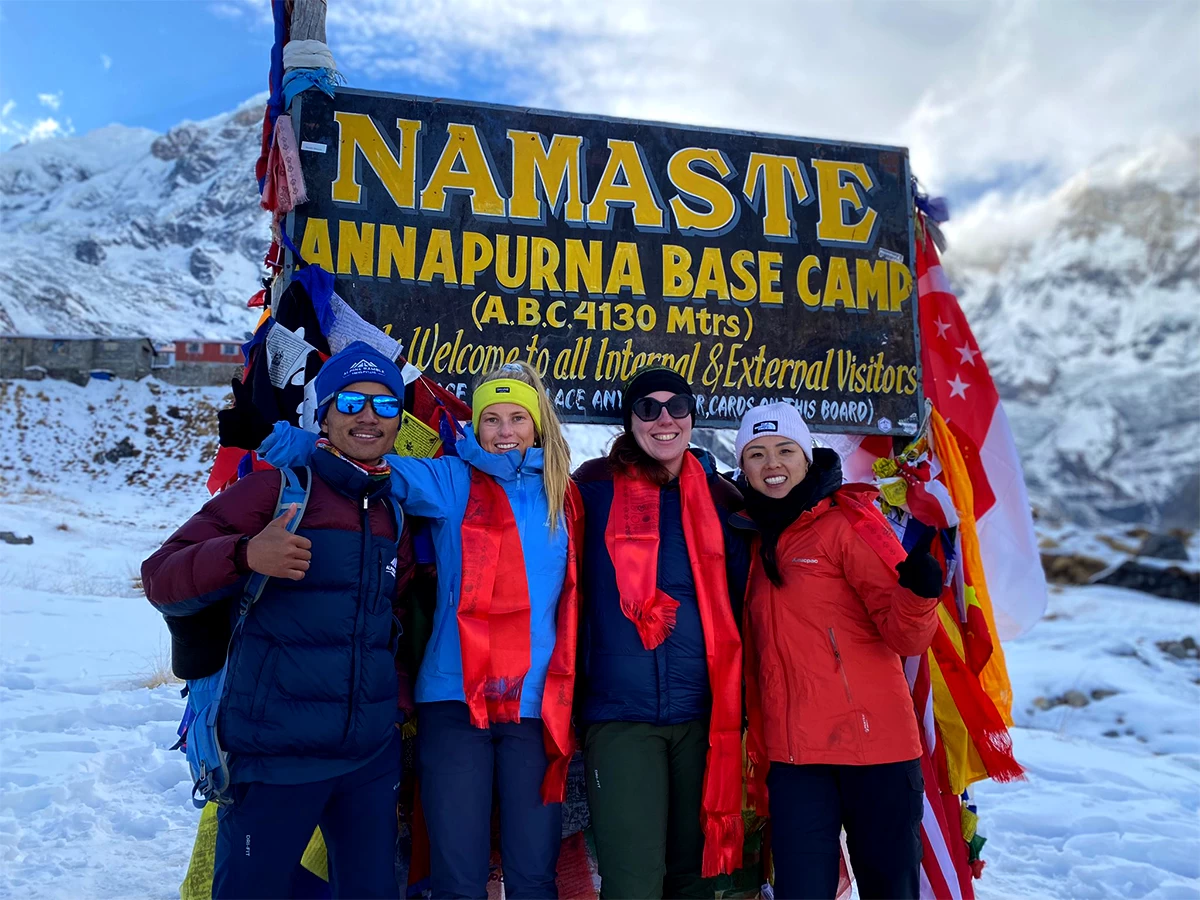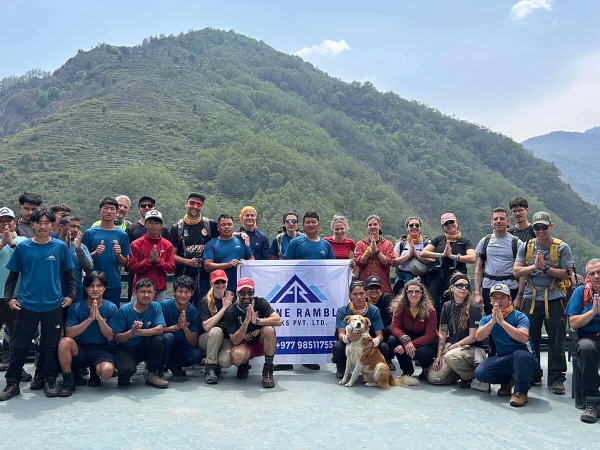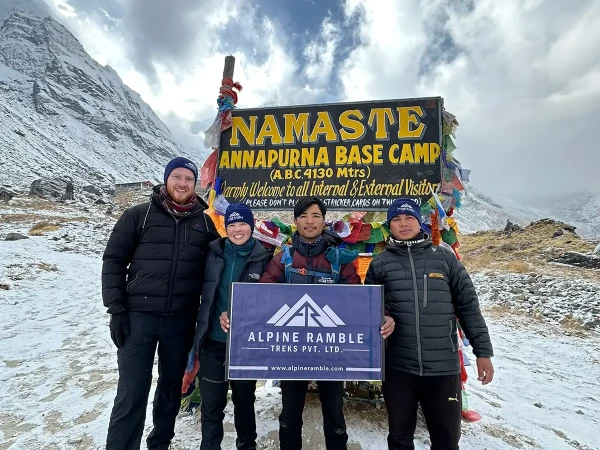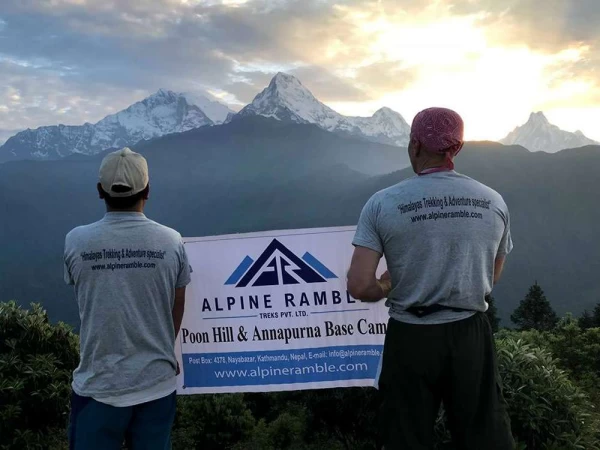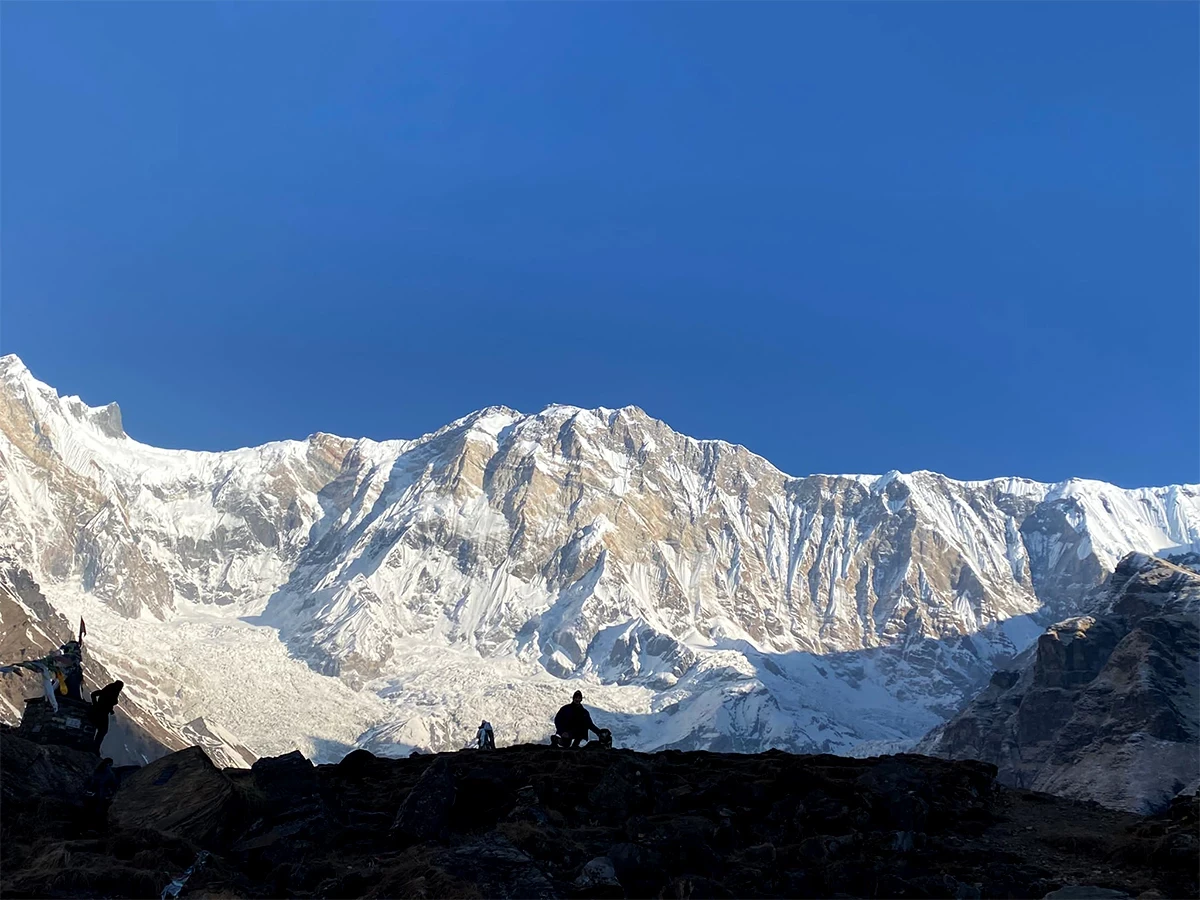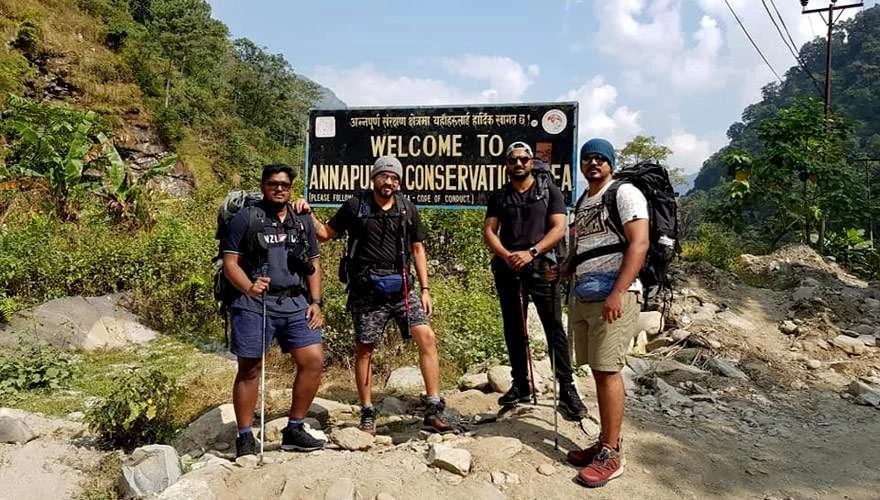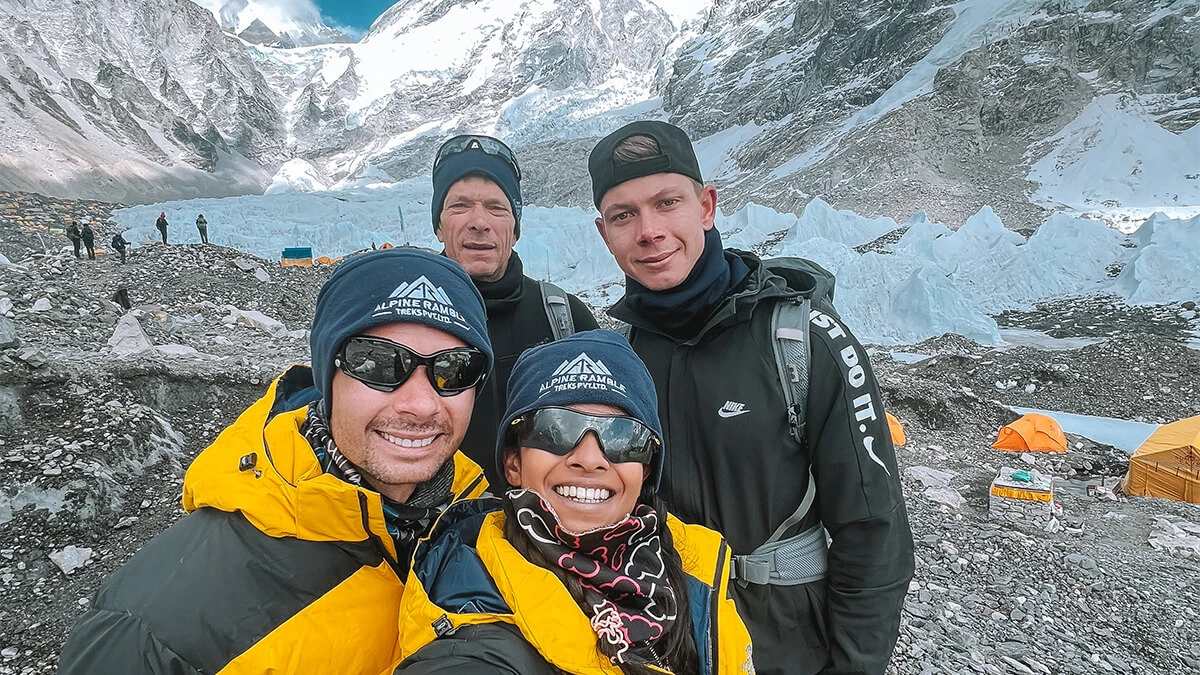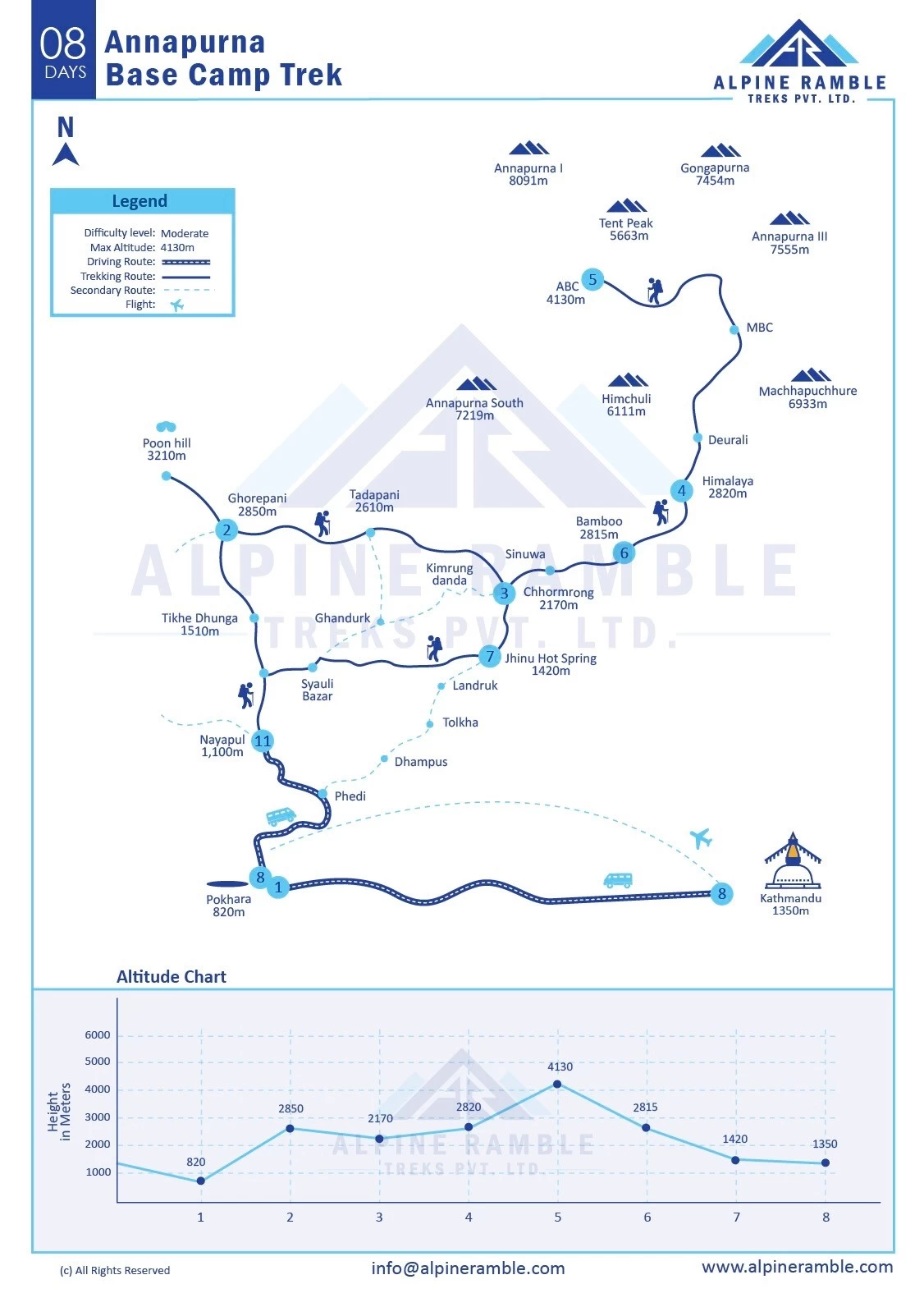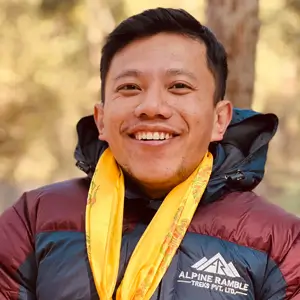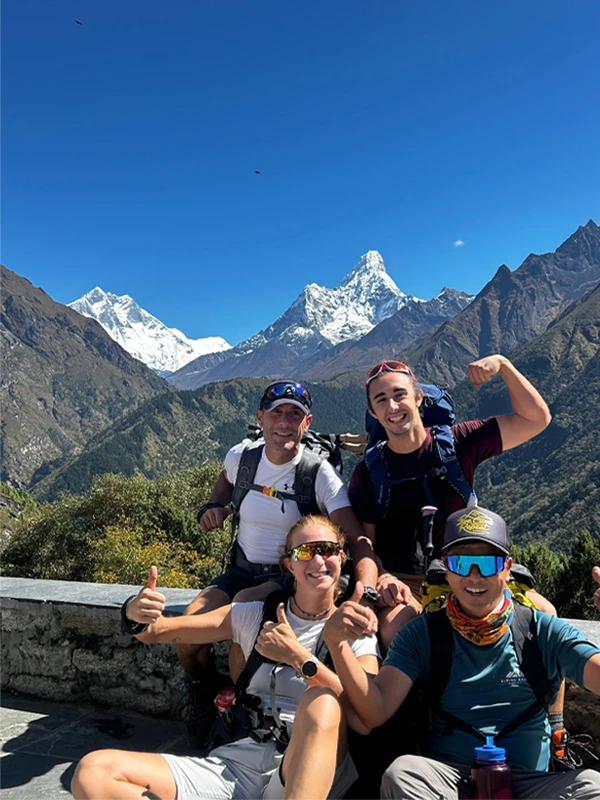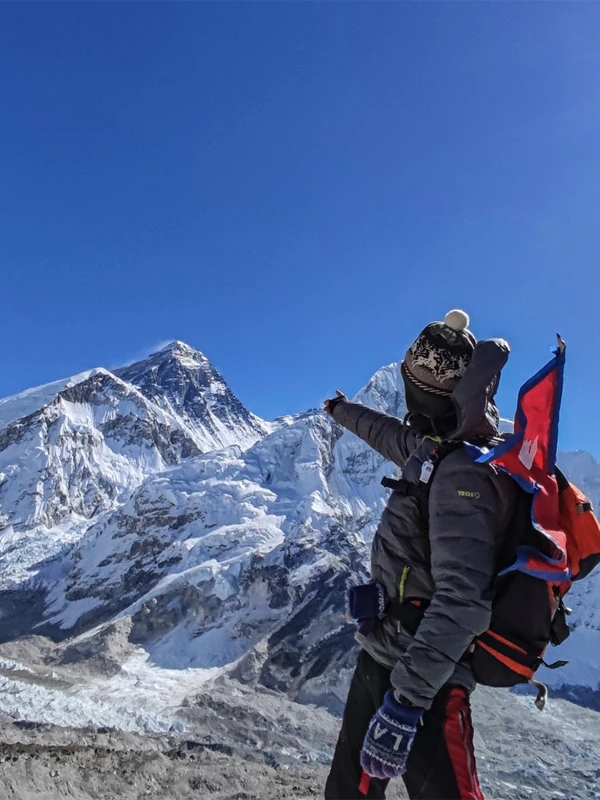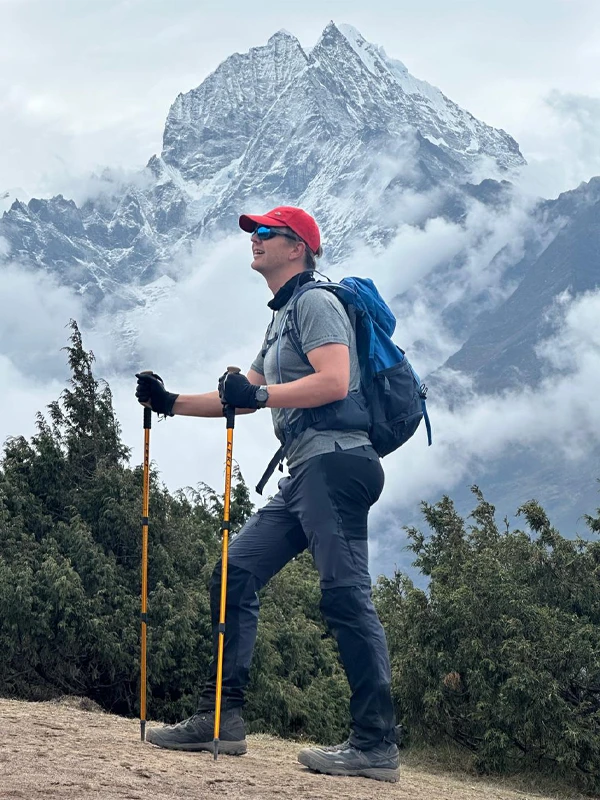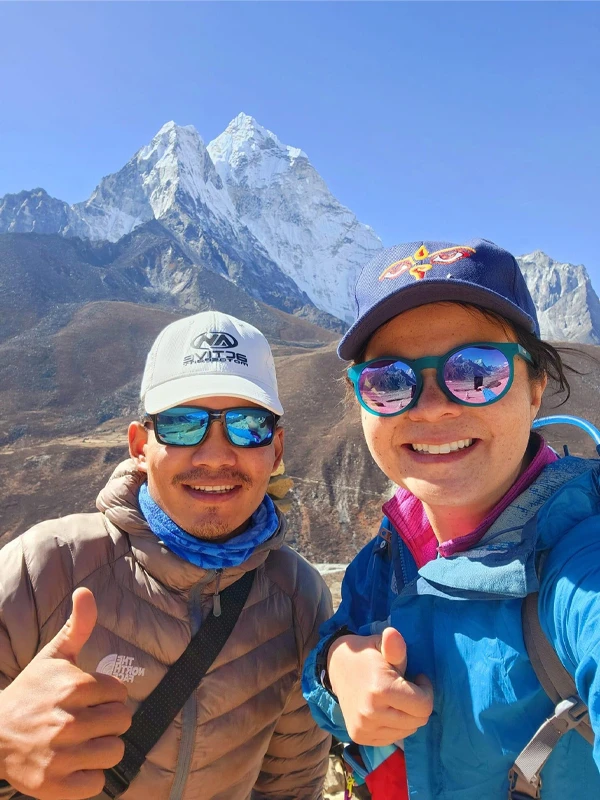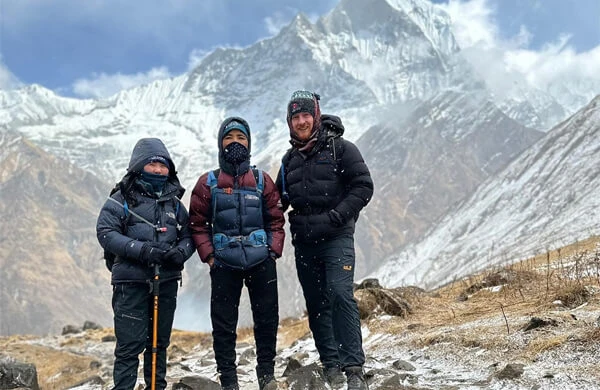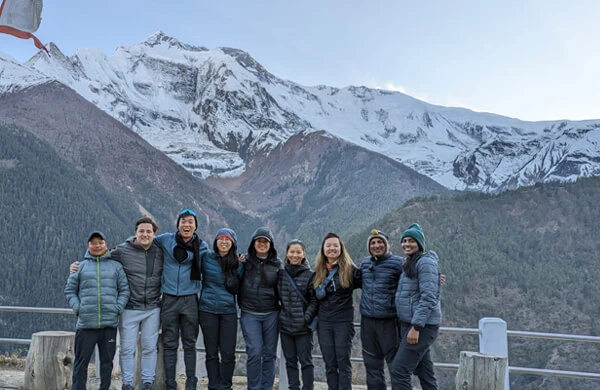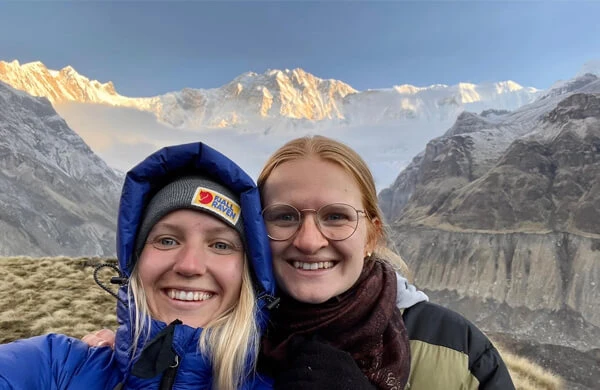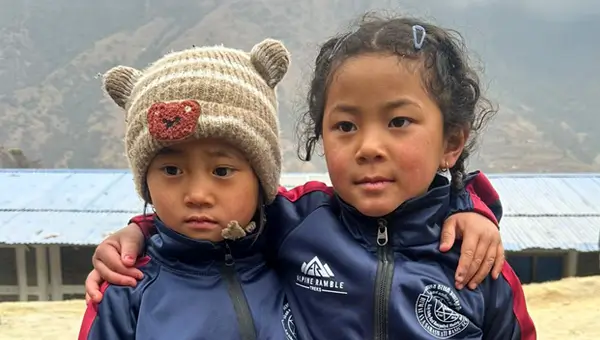Picture yourself standing within the sacred confines of the Annapurna Sanctuary: a ring of impossibly beautiful Himalayan mountains, frozen with permanent glaciers and dusted with fresh snowfall from the top of the world. This is the ultimate destination of the Annapurna Base Camp Trek, and when you travel with Alpine Ramble Treks, you’ll get front-row seats to all the wonders of this vast mountain amphitheater.
Highlights of the Annapurna Base Camp Short Trek: 7 Days
- Get the best view you can possibly get of Mount Annapurna I (8091 meters), the 10th-tallest peak in the world.
- Apart from Annapurna I, you can also get grandiose sightings of Annapurna II, Annapurna III, Annapurna IV, Machhapuchhre, Dhaulagiri, Gangapurna, Nilgiri, and other lesser-known mountains.
- Visit Ghandruk Village and engage in cultural activities, as well as visit the Gurung Museum.
- Walk on the longest suspension bridge in the entire Kaski district at Jhinu Danda.
- Enter the natural heaven filled with enchanting alpine forests that give an occasional glimpse of wildlife.
- Immerse yourself in the authentic community experience of the native people, such as the Gurungs and Thakalis.
- Taste the spice of Annapurna by enjoying the local foods such as dal bhat, thukpa, Tibetan bread, Thakali Khana, etc.
- Enjoy a relieving dip in the hot spring at Jhinu Danda and relax your sore muscles from the trek.
- Experience the harmonious blend of both Buddhism and Hinduism as you walk through paths filled with Buddhist prayer flags as well as Hindu temples.
- Enter the Annapurna Conservation Area, the first conservation area in Nepal.
Experience all the thrills of the 7-Day Annapurna Base Camp Trek in 2025 and 2026.
The 7-Day Annapurna Base Camp Trek, or ABC Trek, is one of Nepal’s most popular treks—undoubtedly one of the finest. There are plenty of reasons to choose this trek over its many competitors scattered across the length and breadth of the Himalayas: its relative accessibility from Kathmandu, its unique combination of authentic cultural encounters and spectacular alpine scenery, its comfortable teahouse-style accommodations, and its reasonably gentle elevation changes.
But our seven-day Annapurna Base Camp trekking itinerary offers one perk that few other treks in Nepal can match: the opportunity to visit and return from the awe-inspiring Annapurna Sanctuary in just a week.
At Alpine Ramble Treks, we’ve leveraged our considerable experience in the trekking industry to make this expedition possible. We’ve arranged the most efficient transportation, acquired the most reliable gear, and trained the best guides in the business to bring you safely along each step of the mighty Annapurna Base Camp Trek. Read on to discover more about this exciting travel opportunity.
Marvel at the intersection of culture and nature during one of the best treks in Nepal
During your adventure on the Annapurna Base Camp Trek for 7 days, you’ll discover a world of quiet mountain villages where traditional cultures and ancient traditions still hold sway. You’ll visit the lovely towns of Ghandruk, Chhomrong, Deurali, and many lesser-known hamlets, where you’ll meet friendly locals eager to share their way of life.
These alpine communities have long sheltered beneath the towering mountains of Gangapurna, Machapuchare, Himalchuli, and the mighty Annapurna massif. This combination of ravishing natural beauty and welcoming Himalayan people makes the Annapurna Base Camp Trek unforgettable.
While you may have booked your trek in Nepal to hike amongst the highest mountains on the planet, you’ll walk away with unforgettable memories of the locals you’ll meet, the cultural experiences you’ll share, and the renowned hospitality of the Nepali people. For many of our returning guests, this is the actual draw of the Annapurna Base Camp Trek.
Reach Annapurna Base Camp with Alpine Ramble Treks at your side.
The Himalayan mountains of Nepal are a region of breathtaking natural beauty, where wonders and marvels abound at every turn. At Alpine Ramble Treks, we’ll handle all of the details of your trek, leaving you free to enjoy the adventure and thrills of traveling in this remarkable part of the world.
We’ve spent years fine-tuning this itinerary, developing and perfecting the best possible one-week trek in the Annapurnas. We’ve created an accessible adventure appropriate for experienced and novice trekkers.
Our expert guides are standing by, ready to introduce you to the astonishing sights of the Annapurnas. When you first step foot onto the trail that will ultimately lead you to the legendary Annapurna Sanctuary, you’ll have the support of our entire team. So, if you’re ready to begin planning your excursion to Annapurna Base Camp, don’t wait—reach out to us today at +977 9851175531 via WhatsApp or online.
7-Day Annapurna Base Camp Voyage: Best Time/Season
The summer monsoon largely dictates trekking seasons in Nepal, and our short Annapurna Base Camp Trek is no exception. The monsoon typically lasts from June to August, and most visitors consequently choose to hike during the spring months of February to May or the autumn months of September to November.
These are the best times of year to enjoy the perfect combination of comfortable temperatures and clear mountain views. But you can hike in the Annapurnas at any time of year, and the snow-laden trails of winter are just as mysterious and evocative as the mist-shrouded hillsides of summer.
Whenever you choose to travel, rest assured that Alpine Ramble Treks will create a trekking adventure surpassing even your highest expectations.
7-Day Annapurna Base Camp Trek Difficulty
Our short Annapurna Base Camp Trek is one of the most accessible hikes in the Himalayas. Most travelers in good health and with reasonable physical fitness will be able to complete this itinerary without issue, and no previous trekking experience is required.
However, this trek reaches altitudes higher than 4,000 meters, and drinking lots of water and getting plenty of rest is essential to let your body adjust naturally to the increased elevation. As always, your guide will look after your progress and ensure you enjoy a safe and rewarding trek to Annapurna Base Camp.
Are you looking for other great treks in Nepal?
While our seven-day ABC Trek is one of the most accessible treks in the Himalayas, Alpine Ramble Treks has many other excellent options for adventure seekers to consider. If you’d like to explore the Annapurna mountains more leisurely, you won’t want to miss our 12-day ABC trekking itinerary.
For even more ambitious travelers, our 12-day Annapurna Circuit Trek offers the chance to explore more of this incredible region, including a thrilling climb to a high-altitude mountain pass.
And if you’d prefer to look beyond the Annapurnas, you’ll discover some of Nepal’s classic hiking itineraries, like the Everest Base Camp Trek and Langtang Valley Trek. But no matter where your sense of adventure leads you, Alpine Ramble Treks can develop a customized itinerary. If you need help deciding where to go, contact us today!
7-Day Annapurna Base Camp Hike Benefits with Alpine Ramble
- Free transfers to and from Tribhuvan International Airport upon arrival and departure.
- Complimentary use of any necessary trekking equipment, such as sleeping bags, down jackets, duffle bags, walkie-talkies, trekking poles, and an oximeter to monitor your oxygen and pulse.
- Fun souvenirs of your Himalayan adventure: a trekking route map, a t-shirt emblazoned with the Alpine Ramble Treks logo, and a hat!
